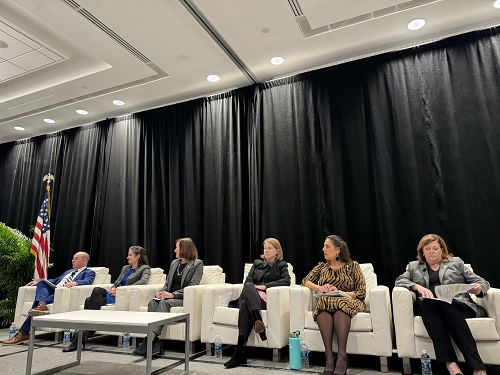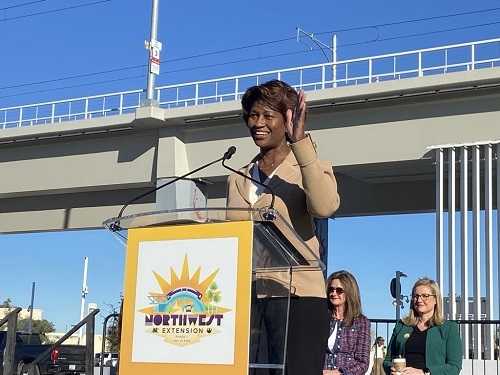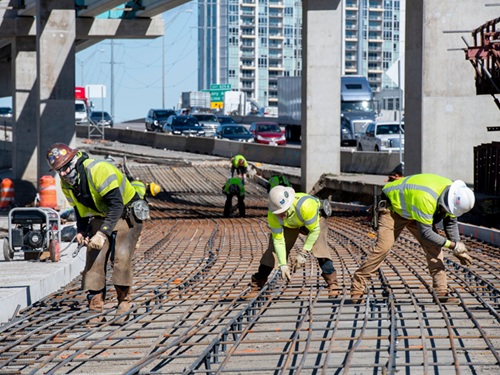Key leaders of the U.S. Department of Transportation’s modal administrations emphasized the safety issues they are addressing during a special roundtable session at the 2024 Washington Briefing held by the American Association of State Highway and Transportation Officials in Washington, D.C.
[Above photo by AASHTO]
From a broad perspective, Sophie Shulman – acting administrator for the National Highway Traffic Safety Administration – said it is, “important to bring together all the safety tools we have to solve the roadway [fatality] crisis; we need to address the entire transportation ecosystem” if big safety improvements are to be made.

“The crisis on our roads is too big for any one agency or government to solve alone,” she added. “It will take all of us working together to share our experiences, challenges, and successes.”
Sue Lawless, acting deputy administrator for the Federal Motor Carrier Safety Administration, pointed out that her agency is “trying to move to a more real-time process for analyzing crashes; working on what I call a ‘granular level’ analysis of safety data. We want to see why certain things are happening to help drive states to deploy solutions with the greatest safety impact.”
Veronica Vanterpool, deputy administrator with the Federal Transit Administration, added that improving safety also means adding more protections for transportation workers – especially transit system operators.
Vanterpool noted that reducing transit worker assaults is a major safety focus for her agency right now. “Assaults have more than doubled between 2008 and 2022 – they are happening in urban, rural, and tribal communities,” she said. “Assaults are a big risk in the system.”

[Editor’s note: FTA Administrator Nuria Fernandez has announced that she will step down and retire from the agency on February 24, with Vanterpool stepping in to serve as acting administrator.]
Katie Thomson, deputy administrator for the Federal Aviation Administration, noted that improving safety is also about taking a “bigger picture” approach to transportation; viewing it as an interconnected and multimodal system.
“We have to remember aviation connects to roads, rails, and transit; [those connections] are what allow people to reach their final destinations,” she stressed. “That’s why we need to engage all stakeholders across the transportation chain as we make infrastructure investments in our communities.”
State departments of transportation play a key role in that chain, added Jennifer Mitchell, deputy administrator for the Federal Railroad Administration.
She explained that her agency is focused on building more “organizational capacity” by seeking “strong and robust partnerships” with state DOTs. “This is something that we are focusing on a lot with all of our state DOTs across the country,” Mitchell added.



